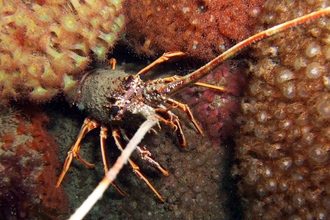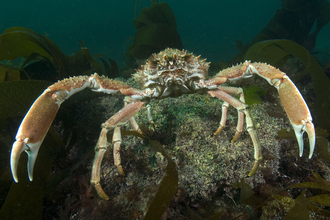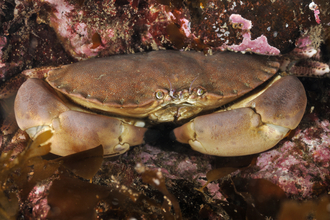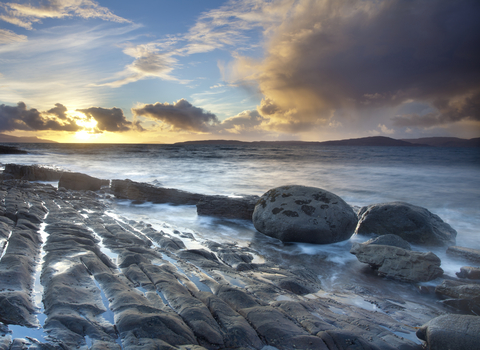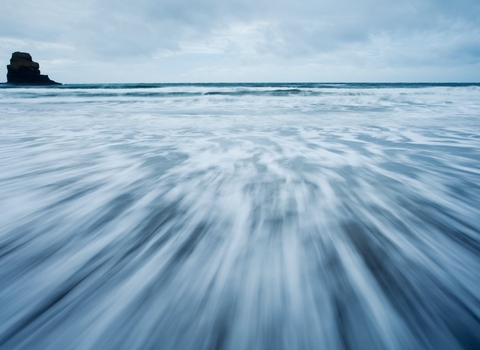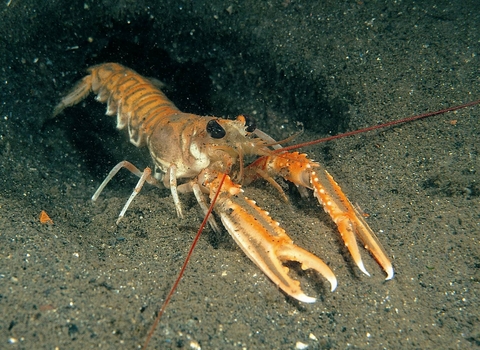
Scampi ©Paul Naylor www.marinephoto.co.uk
Scampi
Did you know your seaside scampi was actually a kind of lobster? Traditionally so - although the scampi that is often eaten with chips can be anything from prawns to fish.
Scientific name
Nephrops norvegicusWhen to see
January to DecemberSpecies information
Category
Statistics
Length: 18-25cmConservation status
Common but with overexploitation in some areas
Habitats
About
Scampi, Dublin Bay prawn, langoustine, nephrops, Norway lobster - call it what you will, this little orange lobster is the most commercially important crustacean in all of Europe.They live in self-dug burrows in the seabed, hiding away during the daytime and appearing at night to feed on crustaceans, molluscs, worms and starfish. They are highly territorial, aggressively defending their burrows and leaving only to feed or mate - though they don't really like to travel great distances to do either! Although they can swim, they prefer to crawl along the seabed.
Once a female has mated, she will return to her burrow with the fertilised eggs attached to her swimming legs. This protects the eggs from hungry predators. We say that a female lobster carrying eggs is "berried".
How to identify
A long orange lobster with 3 pairs of claws - 2 small and 1 large and typically lobster-like. They live in burrows in the seabed so are rarely seen alive except by divers. More commonly seen as langoustines in French cooking. Their tails are used for Scampi.Distribution
Live in burrows in the seabed around much of the UK, absent from much of the English Channel.Did you know?
Scampi is a favourite food of cod, thornback rays and the small spotted catshark!How people can help
If you choose to eat scampi or langoustine (same animal, different name!) then look out for those caught using creels rather than from trawling. Creeling allows undersized animals or berried females to be returned to the sea, whilst trawling catches all in its path, including other non-target wildlife.Nephrops (same animal again!) are found in the Mud Hole recommended Marine Conservation Zone in the Irish Sea. It is currently unprotected, but if designated it would provide a safe haven for nephrops, resulting in spillover of individuals into surrounding non-protected areas.

